Victor Connolly,
Burgage Stud
Q: What conclusions did you draw from the most recent foal sales?
A: There remains a huge demand for top foals. This always seemed likely following the record store sales last June and the continuing strength of the point-to-point sector.
The number of wealthy owners wishing to compete at the top end of NH racing is impressive. There was a particular appetite for foals by a number of proven sires and by unproven sires who are considered fashionable.
It is also reassuring that nice fillies with good pedigrees are now almost as valuable as colts. This is in response to an enhanced mares’ race programme and an industry desire to provide NH racemares with similar opportunities and a race programme that their flat counterparts have always enjoyed. However the 65% clearance rate of NH foals at Fairyhouse shows just how select the 2022 foal sales have been.
Q: Did you change your covering fees for next year? If so, what was your reasoning?
A: At present we don’t expect much change to our stallion fees. Even though sales in general have been exceptional in 2022, there are external factors that could put pressure on bloodstock prices into the near future.
Q: At this early stage, do you expect covering numbers at your farm to be up or down next year?
A: At this stage I don’t see a reason why the numbers should change much. However, as always, the racetrack success of a stallion’s progeny could alter that.
Q: Have you seen much of an increase in you costs? If so, in what areas?
A: The large increase in the price of oil and gas drives up the costs of every sector. This uncertainty has made the price of electricity, feed and transport very different to this time last year. It seems nothing escapes.
Q: In your opinion, which part of the racing and breeding business seems to be doing best at the moment?
A: The continued success of our leading trainers at the highest level, especially Aidan O’Brien and Willie Mullins, continues to amaze. We should be very proud of our ranking on the world racing stage for a relatively small country.
Last year was an exceptional year of bloodstock sales. A record turnover of €215 million in sales was up 17.5%. This year will also see record prize money on offer in Ireland. We remain fortunate to have governments that are supportive of racing and realise the importance of this investment.
Q: Name a young person in the industry who has impressed you and why.
A: There are so many bright, hard-working young people in our industry and, if they are patient, they should all have their turn. Jack Kennedy’s record for a 23-year-old rider is really impressive. His attitude and work ethic is an example for others to follow,
Q: Outside of your own stallions, what sire has surprised you this year?
A: It was reassuring and good to see the progress of champion first-season sire Havana Grey last year. Just like recent stallion success stories Mehmas and Ardad, he was available at a relatively small covering fee and these stallions were viable options for all breeders.
Havana Grey’s two-year-olds started winning early and they kept moving up through the grades so that he was sire of 13 blacktype horses by the season’s end.
Just as great racehorses with top pedigrees may fail at stud, lesser-performed sires can surprise. It is important that this continues to happen, particularly in National Hunt, where studs and breeders need to be encouraged to give an unfashionable young stallion an opportunity. It helps to keep the thoroughbred breed diverse.
Ger O’Neill,
Castlefield Stud
Q: What conclusions did you draw from the most recent foal sales?
A: Good-quality stock sold very well. Anything middle-market struggled. We were delighted with Hunting Horn’s first crop. Two of his colt foals made €27,000 and €22,000 at Goffs December. This is a difficult time for an unproven stallion to make their mark but the fact that Hunting Horn is by Camelot is helping him.
Q: Did you change your covering fees for next year? If so, what was your reasoning?
A: They’re all staying at the same fees – Alkumait at €5,000, Mirage Dancer at €3,500, and Hunting Horn at €2,000. All our clients seemed to make money on their foals and we want to keep them involved. The price of everything else is going up, so it shows you how resilient the racing industry is that the market stayed as strong as it did. Point-to-pointers are making record prices.
Q: At this early stage, do you expect covering numbers at your farm to be up or down next year?
A: I’d expect numbers to go up a bit, especially if Mirage Dancer’s foals are anything like their sire. As I mentioned above, Hunting Horn’s foals did well at the sales and Alkumait’s pedigree has really blown up. His half-brother Chaldean won the Dewhurst and a foal half-sister sold for one million guineas. There’s plenty to look forward to there.
Q: Have you seen much of an increase in your costs? If so, in what areas?
A: We have lots of horses on the farm, so the feed bill is huge. Fertiliser has gone up a lot and the price of diesel hit us too as we have show jumping trucks on the road.
Q: In your opinion, which part of the racing and breeding business seems to be doing best at the moment?
A: There are people making money and losing money in all sections, but I’d say the point-to-point side has never been stronger. Those handlers have been spending more at the store sales so it’s only right that they are getting paid more for their winners.
Q: Name a young person in the industry who has impressed you and why.
A: Jerry Horan (auctioneer, Ballynure Park Stud, Paragon Bloodstock) is destined for big things. He has come on board with Alkumait and he is very good with breeders. He has advice for everyone and he is very approachable.
Q: Outside of your own stallions, what stallions are you keeping an eye on?
A: Because Alkumait is by Showcasing, we are watching two more Showcasing stallions – Advertise and Soldier’s Call – very closely. Both are due to have their first runners in 2023.
Tom Meagher,
Kedrah House Stud
Q: What conclusions did you draw from the most recent foal sales?
A: The foal sales this year were very large with a lot of foals selling over a short period of time. In general prices were very strong but there were exceptions with some good foals slipping through the cracks, making less than they should have.
I think the biggest losers are the lessor half of the foals produced by the stallions with the high fees and huge books. These mares were clearly overcovered and their foals could not make anywhere near their covering fees. If these mares were covered - like the French breeders do - by younger stallions with realistic stud fees these foals would be profitable and produce more diverse stores.
Q: Did you change your covering fees for next year? If so, what was your reasoning?
A: Since acquiring the exceptionally well-bred Rich History (by Dubawi) to stand at Kedrah House Stud in 2022 (first season) his half-brother Kyprios has won four Group 1 races in 2022 and is the highest-rated stayer this century.
Being by Dubawi, the world’s leading living sire, there is a very dramatic increase in interest in Rich History from both flat and National Hunt breeders, and other stud farms. Kedrah House Stud has decided to resist the big offers and retain him at an affordable fee to our loyal clients for the future.
This decision was tempered by the premature death of our very popular sire Berkshire. Hence we expect an increase in numbers of mares visiting in 2023 and beyond.
Q: Have you seen much of an increase in you costs? If so, in what areas?
A: Yes, obviously all our major costs have increased including feed, fuel, contractor charges, et cetera. Our stud fees and livery charges have to reflect these increases if we are to survive.
Q: In your opinion, which part of the racing and breeding business seems to be doing best at the moment?
A: I am a particular fan of National Hunt racing, where most of our business comes from. I think that great credit is due to the management and staff at our country racecourses for continuing to improve facilities and offer great NH racing in the winter months.
Q: Name a young person in the industry who has impressed you and why.
A: I have been very impressed by a very special young equestrian person who happens to be my 11-year-old grandson and namesake, Thomas H. Meagher, whose career high was winning the 128cm pony show jumping championships at the Dublin Horse Show last year in the main arena, immediately after the Nations Cup.
I have three other equally admired grandchildren who look after their ponies whom they compete competitively show jumping each week.
Q: Outside of your own stallions, what sire has surprised you this year?
A: Ronnie O Neill’s Affinisea makes me envious as I think this is a very good horse standing at an affordable fee. Proving my point that you do not need to be a classic-winning racehorse to be a good stallion but you must have a great pedigree, which Affinisea, Well Chosen and Rich History all have.
Aidan Sexton,
Sweep Lane Stud
Q: What conclusions did you draw from the most recent foal sales?
A: I thought the trade was good and there was strong demand at every level of the market. There were plenty of people who found it hard to buy foals. I admire those that seek opportunities by stepping away from the obvious.
Q: Did you change your covering fees for next year? If so, what was your reasoning?
A: No change. It can be difficult for breeders and, in particular smaller scale breeders, therefore I want to offer value and affordability so it is viable for them as they are crucial for the industry.
Q: At this early stage, do you expect covering numbers at your farm to be up or down next year?
A: Up. I have had plenty of enquiries about both stallions but in particular The Irish Rover. Being a son of No Nay Never whose progeny have had an exceptional year on the track and, with the extraordinary results he and his sons (Arizona, Land Force, Ten Sovereigns) have had in the sales ring this year, breeders are keen to use his exciting son The Irish Rover.
Q: Have you seen much of an increase in your costs? If so, in what areas?
A: Yes, in all areas but in particular with feed and staff.
Q: In your opinion, which part of the racing and breeding business seems to be doing best at the moment?
Most areas are doing well. However, there seems to be great demand and money for form horses that have won or been placed in a maiden on the flat and also for maiden point-to-point winners. It is great to see because I understand the competitiveness and the challenges in doing so.
Q: Name a young person in the industry who has impressed you and why.
My nephew Ryan Sexton (apprenticed to Adrian Keatley in Yorkshire). He has made a bright start to his career and looks to be quite talented.
Q: Outside of your own stallions, what sire has surprised you this year?
Coulsty at Rathasker Stud. He has gotten some good horses including the Irish-bred Grade 1 winner Shantisara from relatively small crops.
Donal White,
Foxwood Farm
Q: What conclusions did you draw from the most recent foal sales?
A: I could see that the middle-to-lower market is starting to struggle. In the past, when we are on the verge of a recession, when that end of the market suffers it can been clearly seen in the clearance rate. Pinhookers/purchasers become more critical on their selections which can from time to time impact the results. There are only a handful of sires at the top end of the sales market and I have seen that during a recession even at that high level those sires sales averages have been affected also.
Q: Did you change your covering fees for next year? If so, what was your reasoning?
A: Yes I changed my covering fees for all stallions. Especially the filly foal concession, which can be, depending on the pedigree, a tough market. I have left the fees at a more competitive rate to support breeders in all parts of the market.
Q: Do you expect covering numbers at your farm to be up or down next year?
A: I believe my numbers will increase significantly due to the fact that my proven sires are prices at commercial rates. Saintgodrel will increase his numbers as he is by the leading sire Saint Des Saints and an outcross for Sadler’s Wells mares. As the sire of 12 winners, including a listed winner out of his first crop of four-year-olds, Night Wish will have no problem increasing his covers also. Racinger, already being the sire of two 160-rated horses in Ireland and easily injecting speed into some of the staying pedigrees, speaks for himself.
Q: In your opinion, which part of the racing and breeding business seems to be doing best at the moment?
A: The point-to-point market is going strong but a lot of that is down to the quality of horses and the past results of the stars who have come from the point-to-point field. In relation to breeding, the stud business is consistent. The number of mares being covered in Ireland has increased which ultimately supports the growth of the industry.
Q: Name a young person in the industry who has impressed you and why.
A: Caoimhe Doherty, co-founder of Treo Eile RIR, has been inspirational in how her team have transformed the rehoming and retraining of retired racehorses. As a breeder it is fantastic to see your foal develop and perform as the animal you hope it will be. With the assistance of Treo Eile, it’s easy for these high-performance animals to have another rewarding road in life when its professional career is finished.
Q: Outside of your own stallions, what sire has surprised you this year?
A: Zarak, having so many successful National Hunt horses at this early stage of his stud career has surprised me the most. For most flat sires that success doesn’t come until later on in their stud career. Definitely a sire to watch! CLICK HERE TO REGISTER FOR THE ITM IRISH STALLION TRAIL
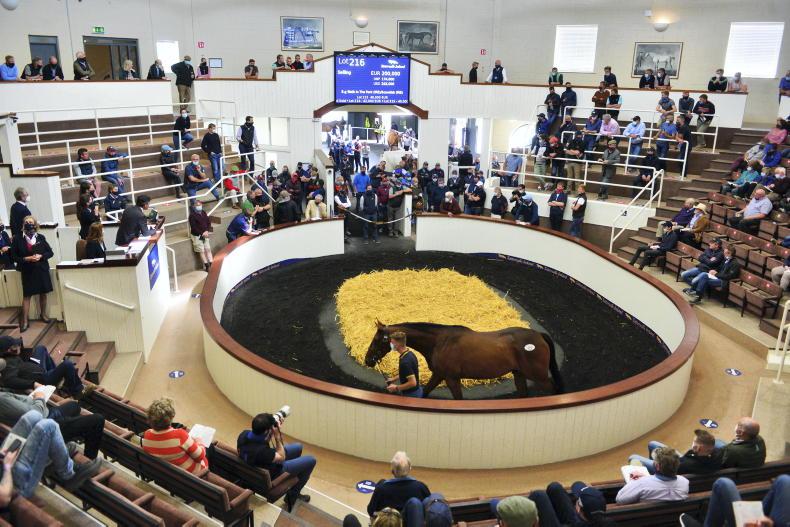

 This is a subscriber-only article
This is a subscriber-only article
 It looks like you're browsing in private mode
It looks like you're browsing in private mode




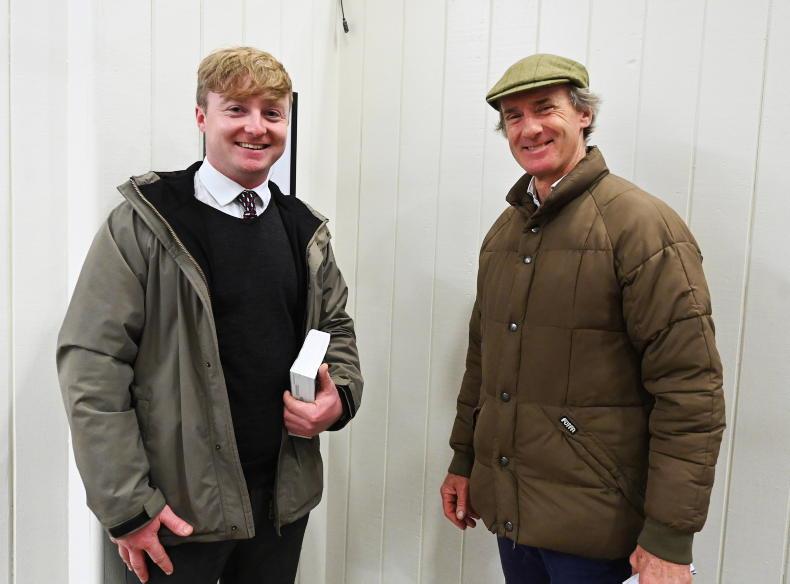
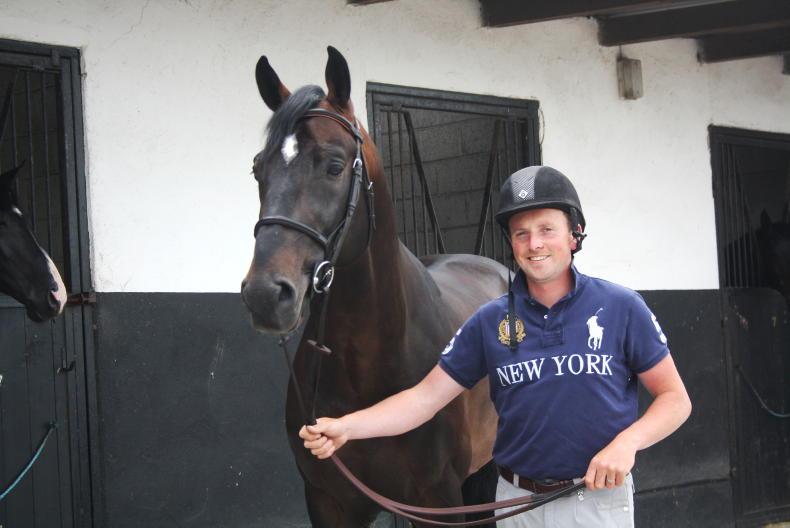
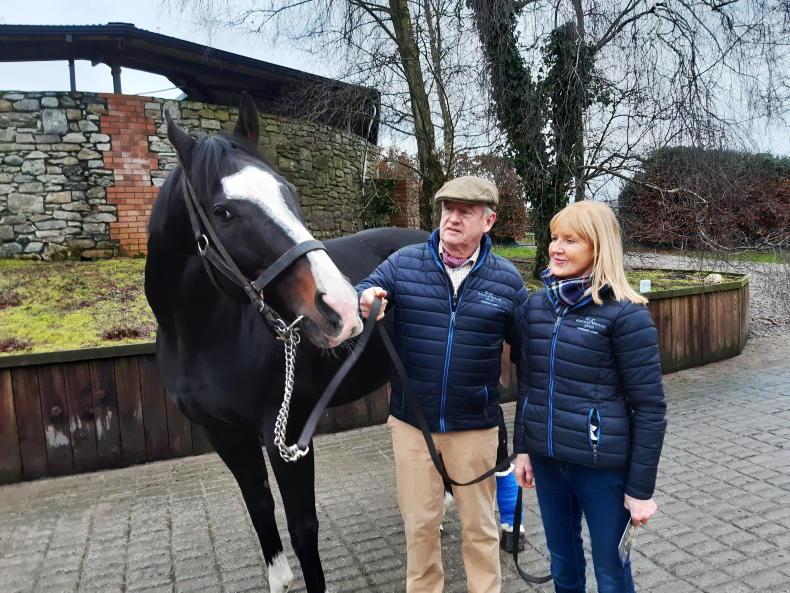
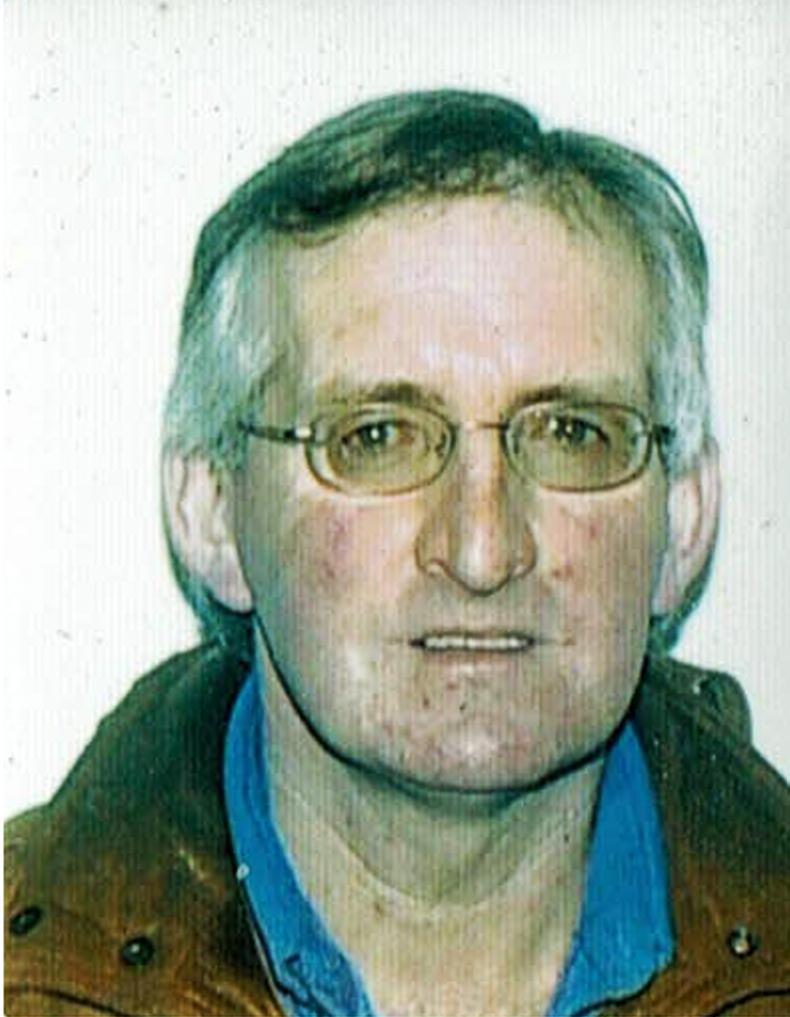


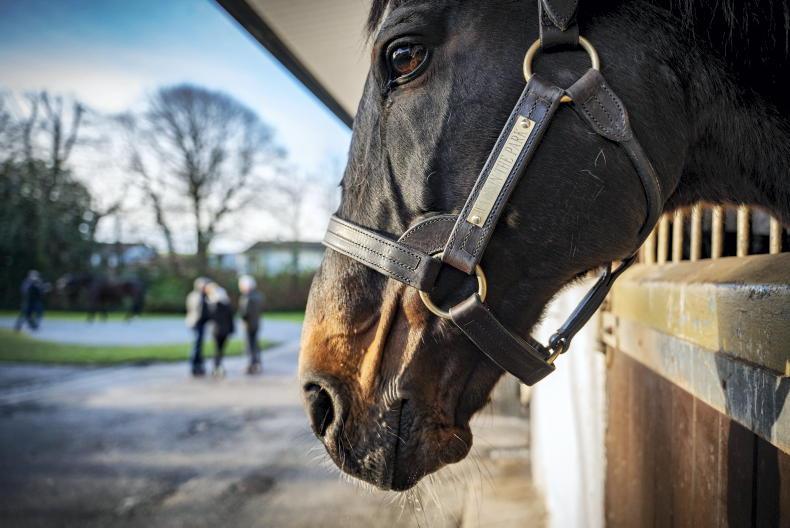

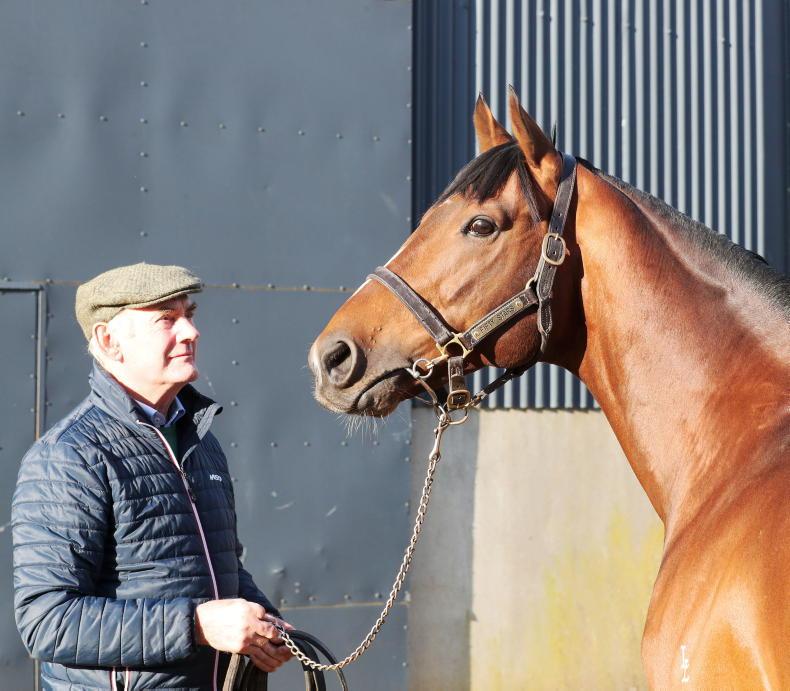
SHARING OPTIONS: